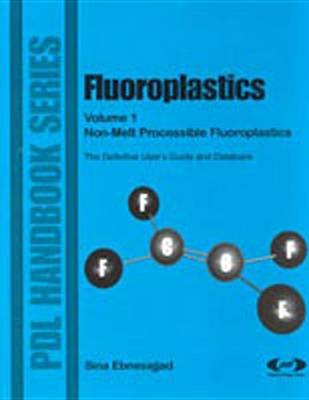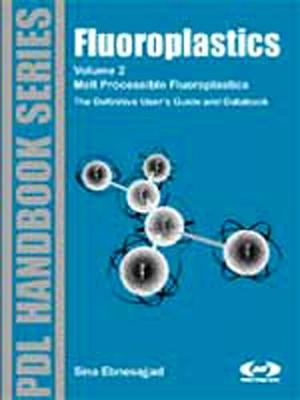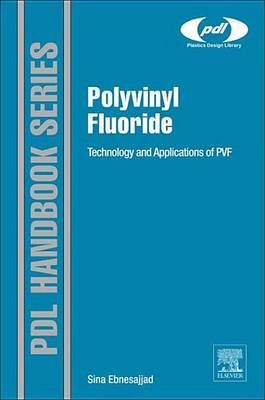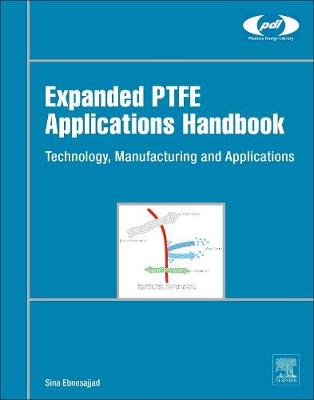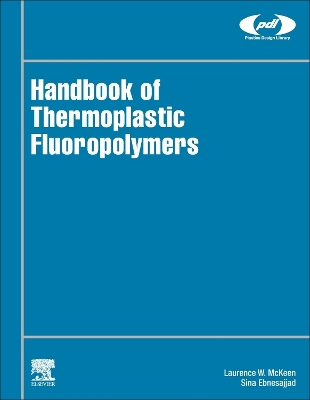Plastics Design Library
10 total works
Speaking to the needs of today's engineering and science students and practicing professionals, this book provides an in-depth treatment of homofluoropolymer polymerization and part fabrication technology. A comprehensive range of issues surrounding the manufacturing of the monomer; polymer, fabrication, end-use, safety, and disposal are covered. The book has been arranged to allow self-managed reading and learning. It is both a source of data and a reference.
Engineers and scientits involved in polymer processing need practical information about these additives, their applications, and proper and safe handling. Until now much of this information has been difficult to obtain because of commercial secrecy.
In recent years, the applications of fluoropolymer additives have expanded significantly, with even the meaning of 'fluoropolymer additives' expanding from relatively the narrow definition of PTFE powder fillers to a wide variety of fluoropolymer elastomers, used as a processing aid for plastics processing such as extrusion, injection molding, and film blowing. The benefits of fluoropolymer additives used in plastics are the elimination of sharkskin defects, increases in process speed and output (up to 20%), the reduction of die build up, the reduction of gels and optical defects, etc.
In addition, fluropolymer additives are being increasingly used in inks, lubricants, and coatings. For example, in the coating industry fluoropolymer additives can increase the life cycle of exterior coatings due to their excellent weatherability and subsequently increase the time between recoats.
Fluoroplastics, Volume 2: Melt Processible Fluoroplastics
by Sina Ebnesajjad
This book is the first and only handbook that describes polyvinyl fluoride preparation, technology, processing, fabrication and applications - making it essential reading for engineers and scientists working in industry sectors where PVF is utilized.
Dr. Ebnesajjad covers the history and applications of a wide variety of materials, including expanded polytetrafluoroethylene, polyvinyl fluoride, vinylidene fluoride polymers and fluoroelastomers, just to name a few. Properties and applications are illustrated by real-world examples as diverse as waterproof clothing, vascular grafts and coatings for aircraft interiors. The different applications of fluoropolymers show the benefits of a group of materials that are highly water-repellant and flame-retardant, with unrivalled lubrication properties and a high level of biocompatibility. Health and safety and environmental aspects are also covered throughout the book.
The book is an essential handbook for scientists and engineers working in PTFE processing industries, and for manufacturers working with fluoropolymers. It is also of use to purchasing managers and academics.
With the fate of the industry uncertain, the book traces the trends developed through the early decades of the material through to the present day and beyond, providing a thorough introduction to new practitioners in this field, and presenting key expert insights into the future direction in fluoropolymer technologies and products.
By putting together this information and insight into a single volume, this book provides materials scientists, chemical engineers, polymer scientists and engineers working in a range of industries - such as automotive, aerospace, power generation, and chemical processing - with an introduction to fluoropolymer materials and current trends in their use, as well as indicating future directions for research and application in this field.
Handbook of Thermoplastic Fluoropolymers
by Laurence W. McKeen and Sina Ebnesajjad
Detailed coverage of technical details of processing methods, characteristics, and chemical properties of commercial thermoplastic fluoropolymers all in one place make this the most authoritative reference to the subject available.
